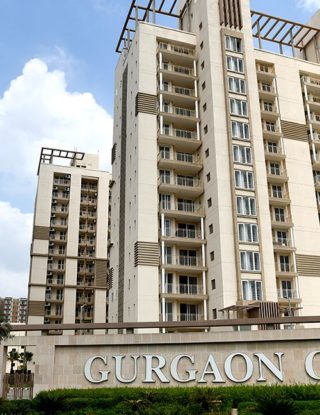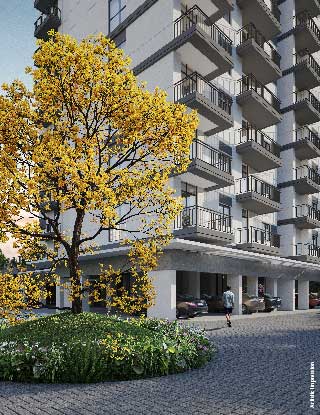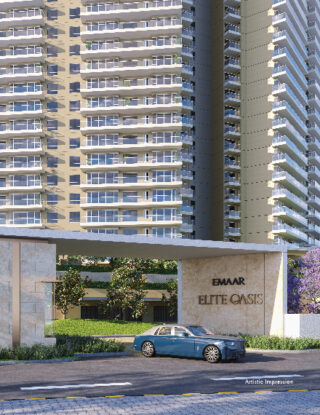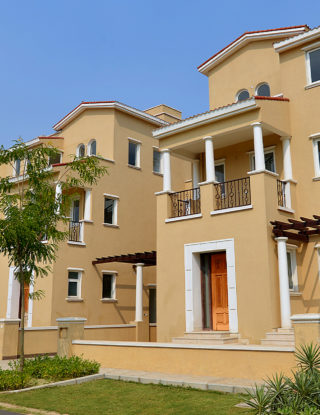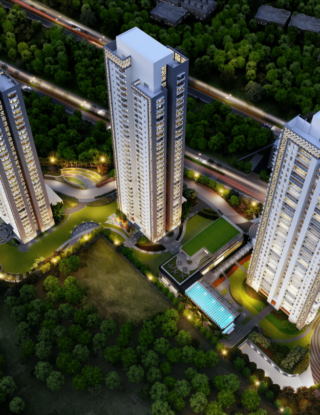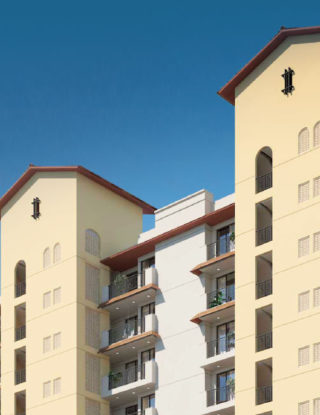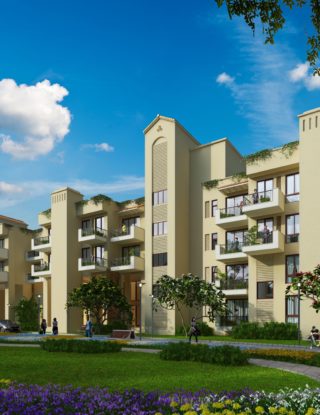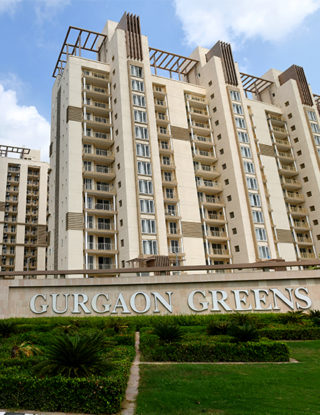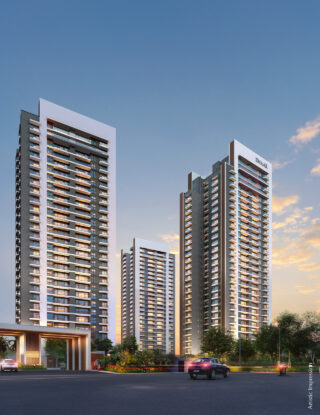India’s real estate sector is witnessing a positive transformation, largely influenced by recent changes in the Reserve Bank of India’s (RBI) monetary policy. With the repo rate now set at 6.00% as of April 2025, the cost of borrowing has diminished, creating a prime opportunity for prospective homebuyers and investors to explore the property market. Decreased borrowing costs result in lower equated monthly instalments (EMIs) and enhanced affordability, leading to a notable increase in buyer enthusiasm.
Grasping the Repo Rate and Its Effects
The repo rate refers to the interest rate at which the RBI provides funds to commercial banks. When this rate is lowered, it reduces the banks’ borrowing expenses, which can subsequently lead to decreased interest rates for consumers on various loans, including mortgages. This financial mechanism is a crucial aspect of monetary policy, significantly influencing the overall liquidity within the market.
Recent Repo Rate Movements:
| Date | Repo Rate (%) |
| February 2025 | 6.25 |
| April 2025 | 6.00 |
Source: RBI Press Release
The RBI’s choice to lower the repo rate is designed to boost economic activity by making borrowing cheaper and more accessible. This decision comes in light of global uncertainties, including rising U.S. tariffs that are affecting trade and a decline in international demand. In this scenario, it is essential to encourage domestic consumption and investment, and a lower repo rate serves as a key driver for this initiative. Additionally, it fosters confidence among developers and investors, indicating a favourable business climate.
Effects on Home Loan EMIs
A decrease in repo rates leads to lower interest rates on home loans, which can result in substantial savings throughout the loan period. For many Indian homebuyers who rely on housing loans to acquire their homes, this change enhances affordability and alleviates financial pressure.
EMI Comparison for a ₹50 Lakh Loan Over 20 Years:
| Interest Rate (%) | Monthly EMI (₹) | Total Interest Paid (₹ Lakhs) |
| 8.5 | 43,391 | 54.1 |
| 7.5 | 40,280 | 46.7 |
| 6.75 | 38,064 | 41.3 |
Source: HDFC Home Loan EMI Calculator
A decrease of 1.75% in the interest rate can result in savings of almost ₹13 lakhs throughout the loan. This reduction is advantageous not only for first-time homebuyers but also motivates current borrowers to consider refinancing their loans for more favourable conditions. As financial institutions vie to present the most competitive rates, borrowers find themselves in an advantageous position to select appealing home loan offers.
Maximising Returns through Rental Yields
Investing in real estate not only allows for capital growth but also generates a consistent flow of rental income. This combination makes property investment an attractive choice. With a steady demand for rentals in both metropolitan and tier-2 cities, investors can enjoy substantial rental yields that provide monthly income along with long-term asset appreciation.
Average Gross Rental Yields in Q3 2024:
| City | Rental Yield (%) |
| Bengaluru | 4.45 |
| Mumbai | 4.15 |
| Gurugram | 4.10 |
| India Average | 4.98 |
Source: Global Property Guide
These statistics indicate a thriving rental market. As India’s urban population expands and more individuals migrate to cities for job opportunities, the demand for rentals is expected to remain strong. Consequently, investing in real estate not only serves as a solid protection against inflation but also provides a dependable stream of passive income. Moreover, properties situated near business districts, educational facilities, and transportation hubs tend to generate even greater returns.
Government Support: Pradhan Mantri Awas Yojana (PMAY)
The government actively aids homebuyers through initiatives like the Pradhan Mantri Awas Yojana (PMAY), which offers interest subsidies to qualified applicants. This initiative significantly impacts the affordable housing sector, particularly benefiting first-time buyers in search of economical housing options.
PMAY Credit Linked Subsidy Scheme (CLSS) Highlights:
- Interest Subsidy: Up to ₹2.67 lakhs for eligible beneficiaries.
- Eligibility: Households with income up to ₹9 lakh, loan value up to ₹25 lakh for property value up to ₹35 lakh.
- Maximum Carpet Area: Up to 120 sqm.
Source: PMAY-MIS
This subsidy effectively lowers the cost of purchasing a property, easing the financial strain on families with middle and lower incomes. When combined with the reduced repo rate, the Pradhan Mantri Awas Yojana (PMAY) enhances affordability, encouraging more individuals to pursue homeownership.
Market Dynamics: Supply and Demand
Despite the decrease in the repo rate, the real estate market has seen some volatility. In the first quarter of 2025, housing sales in India’s top seven cities fell by 28% compared to the same quarter in 2024, with around 93,280 units sold. This temporary decline in sales can be linked to factors such as postponed project launches, cautious consumer attitudes, and global economic uncertainties.
On a positive note, the unsold inventory also saw a 4% year-on-year reduction, suggesting a potential stabilisation in the market. This situation indicates that while sales may have slowed, the market is adjusting, which could lead to a more balanced relationship between supply and demand. Developers are adapting their strategies by emphasising ready-to-move-in properties, customer-focused offerings, and competitive pricing to attract buyers.
Developer Promotions and Holiday Discounts
In the wake of the COVID recovery, developers have shifted their focus to prioritise customer needs. Buyers can take advantage of:
- Flexible Payment Options: Such as 10:90 or 20:80 plans that alleviate the initial financial burden.
- No Pre-EMI Until Possession: This feature helps lessen the financial strain of paying both rent and EMI during the construction period.
- Incentives: Including modular kitchens, club memberships, parking spots, smart home technology, and more.
These promotions are especially appealing during festive periods when developers roll out special campaigns to encourage bookings. With RERA in effect, ensuring project transparency and timely completion, buyer confidence is at an all-time high. Additionally, many developers are providing online booking and virtual site tours, enhancing the convenience and accessibility of the purchasing process.
For homebuyers seeking to combine these festive benefits with long-term value, Emaar India offers enticing options. Renowned for its global reputation, dedication to quality, and exceptional developments, Emaar distinguishes itself as a developer that not only provides luxurious living but also smart investment opportunities. With flexible financial options and future-ready amenities, the Emaar experience is meticulously designed to maximise the value of every investment.
The Cost of Waiting
Postponing your property investment can result in various financial challenges:
- Price Growth: A mere 5% increase on an ₹80 lakh property translates to ₹4 lakhs.
- Interest Rate Increases: A 0.5% uptick in interest rates could lead to an additional ₹5.7 lakhs in interest over two decades.
- Rental Costs: Spending ₹25,000 per month amounts to ₹3 lakhs each year.
This is why investing in Emaar India today is not just about lifestyle; it’s a smart financial strategy. With numerous exciting projects in progress, including developments in Lucknow and a robust portfolio in Gurugram, featuring the sophisticated Urban Ascent, the timing is ideal. Whether you’re seeking high growth potential or long-term livability, Emaar India’s properties are crafted to provide both.
These developments go beyond mere housing; they create a comprehensive lifestyle ecosystem, complete with beautifully landscaped areas, top-notch clubhouses, smart home technology, advanced security systems, wellness spaces, and sports amenities. Supported by a globally recognised brand, these projects offer premium features, prime locations, and the promise of exceptional build quality, essential elements that significantly boost both rental income and resale value. For those aiming to invest wisely, Emaar India presents not just a property but an upgrade to a lifestyle rooted in legacy, design excellence, and dependability.
Conclusion: Invest Now, Save More
The current economic landscape, marked by a stable and relatively low repo rate, rising real estate demand, and abundant buyer incentives, has created a rare win-win scenario for investors and end-users alike. Lower interest rates mean higher affordability, more savings, and better ROI on your real estate investment.
And in this environment, Emaar India stands as a beacon of opportunity. With prestigious developments such as Urban Ascent, Emerald Estate, Imperial Gardens, and Amaris in Gurugram and upcoming projects in other key cities like Lucknow, Emaar offers a blend of aspirational living and financial prudence.
Appendix: Sources
- RBI Repo Rate Update – Reuters: https://www.reuters.com/markets/rates-bonds/india-cenbank-cuts-rates-second-time-us-tariffs-add-growth-risks-changes-stance-2025-04-09/
- Home Loan EMI Calculator – HDFC: https://www.hdfc.com/home-loan-emi-calculator
- Rental Yield Data – Global Property Guide: https://www.globalpropertyguide.com/asia/india/rental-yields
- PMAY Scheme Details – PMAY-MIS: https://pmaymis.gov.in/PMAYMIS2_2024/PmayISS.aspx
- Real Estate Market Trends Q1 2025 – Business & Finance News India: https://www.businessandfinancenewsindia.com/real-estate-market-trends-q1-2025

